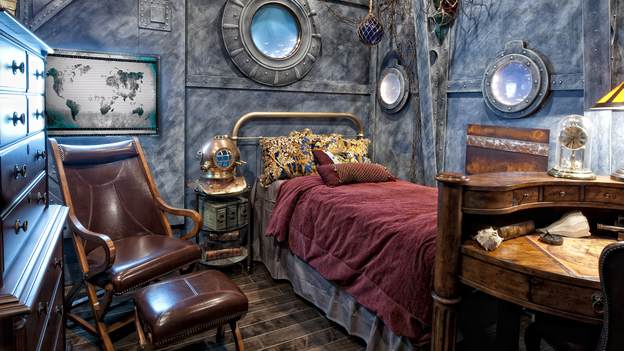For years I have been comparing Extreme Makeover “Home Edition” to complex audio video projects. If you have worked with me in any capacity, chances are you have heard me talk about the “Ty Room” to help me articulate how to find efficiency in programming a complex software solution. I also believe the “The Ty Room” exercise can also be applied when deciding to use a new product, trying a unique solution, or even identifying how to solve issues in your business or with your team. First, let’s consider “Ty”.
Ty Pennington set out to build homes for people who were going through a challenging time. The mission? Build a mortgage-free home catered to the needs of a particular family…in a week. The only way to succeed with this kind of undertaking was to have a carefully thought out system to support every phase of the project. With a system, you can rinse and repeat the process over and over. During the taping, they would show the floor plan, the coordination with the contractors, the emotional story of the family - what they did not show was the planning, procedures, and teams that were in place, trained, and ready to be deployed.
The only room of the project they did not “plan” was a space in each house where Ty let his imagination roam. This was typically a space that was based on a family’s needs: a home learning center, a filtration system designed around an illness, you name it, he did it. The “Ty Room” always required new thinking, planning, and engineering. While the entire house was being built - status quo - the only thing that needed focused attention and room for failures and testing was the “Ty Room”.
How does this relate to you and your projects? I have used the “Ty Room” to help manage the different integration firms we’ve worked with over the years. I’ve categorized my clients into three areas:
-
“The Predictable”: Clients approach us and we’ve found they typically want the same thing every other client wants out of their system design and programming. The process, structure, parts, and main pieces can be accounted for each time in the same way. This strategy is a great way to make money, but it can also deem you irrelevant in the market as everyone starts offering the same solutions. With technology changing daily, your team also likely desires experimenting with new products and innovative ways to make ideas come to life. Where is the balance to keep their attention?
-
“The Dreamers”: On the opposite end of the spectrum, we also work with teams who do less volume and have ample time to create and spend weeks dreaming up crazy ideas that require out of the box solutions. This can feel fun and exciting but often is not mega profitable.
-
“The Never Happy”: Oh, and then there are the clients that want the latest and greatest everything. This type of project usually causes financial strain and relational strain as you struggle to keep the client happy while simultaneously blaming the manufacturer for product issues.
The common denominator in all of these scenarios is the client never really has a product that is functional enough to provide long term stability and custom enough to be exciting, while not jeopardizing scalability.
If I were to categorize a fourth type of client, it would be “The Ideal”. This client has:
- A clear vision that aligns with your business model
- A project that can be designed and managed with 80% of your systems working as intended.
- An interest in going outside of their comfort zone for 20% of their project that is specific to them and will keep them engaged and excited about working with you.
Pulse Group manages 30+ jobs at a time. The only way for our team to take on this level of responsibility is to have the systems in place for the status quo - and then identify the “Ty Room” in each project.
“The Ty Room” will often get extreme focus while the rest of the project is being deployed with your team and systems working in a turn-key process.
The Ty Room allows us to articulate the project’s challenges, communicate with the integrator about those challenges, and often compromise on limiting the number of “Ty Rooms” in a given project or dialing back the original ideas to make way for better solutions. In programming, the “Ty Room” is usually a feature or set of features. The same can be applied to engineering, DSP system design, networking solutions, and the products chosen for a given project.
In closing here are some guidelines I practice at Pulse Group when taking on and managing projects:
- Work to develop a corporate framework that you follow for your solutions and perfect the teams and systems that manage that side of your business.
- Have focused teams available for complex designs that require additional processes, testing, and troubleshooting.
- Limit cutting edge ideas to small samples or “Ty Rooms” within your corporate framework.
- Do have “Ty Room” when it’s time to innovate. Don’t make an entire project a “Ty Room”.
- Not every project needs a “Ty Room”. Those clients I called “The Predictable” typically yield your highest profitability.
- Be willing to identify limits when designing a “Ty Room”
- Involve the sales team and manufacturers in the design of any “Ty Room”
What kind of solutions are you working on for your clients? What categories do your clients fall into? These are questions you need to be asking!

